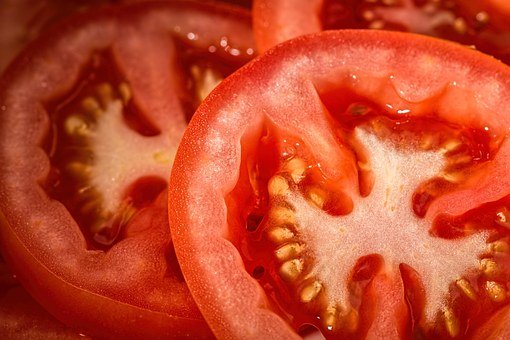Organic gardeners can control the growing process by choosing the best tomato varieties, by saving seeds, and by starting tomato plants from seed.
According to the National Gardening Association, tomatoes are the most popular vegetable grown in home gardens. Organic gardeners can insure that these plants meet their growing standards by starting their plants from seed.
Choosing Tomato Seed Varieties
Gardeners can meet their family’s tomato needs by growing a mix of determinate and indeterminate varieties. Determinate plants remain compact, and produce large yields in a short time, making them ideal for canning projects. Determinate plants are also good choices for container gardens. Gardeners must provide supports for indeterminate tomato vines, which grow and produce until the end of the season.
Organic gardeners love the rich flavor of heirloom tomato varieties like ‘Brandywine’ and ‘Cherokee Purple,’ but hybrids offer built-in protection against specific pests and diseases. Look for the letters F, N, V, and T, which indicate resistance against fusarium wilt, nematodes, verticillium wilt, and tobacco mosaic virus, respectively.
Choosing a hybrid tomato plant doesn’t mean sacrificing flavor. Many hybrids offer flavor superior to supermarket varieties, which must withstand shipping and handling. ‘Big Bite’ offers disease resistance but produces juicy beefsteak tomatoes with a balance between acidity and sweetness.
Whether the choice is hybrid or heirloom, determinate or indeterminate, organic gardeners should consider choosing organically certified tomato seeds. Under USDA governance, this means that treating the seeds with chemical fungicides and pesticides is prohibited. Furthermore, the land on which the seed-bearing tomato plants were grown must be tended by organic methods for at least three years.

image from pixabay
Saving Tomato Seed
One reason organic gardeners appreciate heirloom vegetables is that they grow true from seed from generation to generation. Seeds saved from hybrid vegetables will not produce offspring identical to the parent plant, so be sure to save only the seed from open-pollinated plants. The advantages of saving seeds from one’s garden include saving money by not purchasing seed packets each season, the ability to save rare heirloom varieties from extinction, and the pleasure of sharing or exchanging seeds with gardening friends.
Gardeners should save only those seeds from the most vigorous and successful producers in the garden. By doing this over the years, organic gardeners end up with plants that have the best pest and disease resistance, and perform well in the microclimate present in that particular garden.
Freshly harvested tomato seeds require a fermentation process to remove the gelatinous coat that prevents germination. Place the seeds and gel into a covered container for three days in a warm, dark place. On the third day, rinse away the gel and any mold, and lay the seeds on a screen to dry. Dry seeds stored with moisture-absorbing silica gel packets, such as those that come in new shoeboxes, may remain viable for five years.
Starting Tomatoes from Seed
Tomatoes take about eight weeks to grow from seed to transplant size. Gardeners eager to get the first ripe tomato on the block won’t succeed by starting seeds early, as larger plants suffer transplant shock. Start the seeds in a 50/50 potting soil-compost mix, and keep the seeds in an environment where temperatures are 75 degrees F or greater. This may be on top of the refrigerator, as light isn’t required for germination. After germination, move the plants to a location with strong light and temperatures around 60 degrees F to keep seedlings stocky.
Provide young seedlings with a weekly feeding of compost tea or fish emulsion to keep plants from becoming leggy. Avoid using organic fertilizers high in nitrogen, such as blood meal or manure. When tomato plants have between five and seven true leaves, it’s time to transplant them into the ground or container garden.
they are what i will be growing lots of this summer!
Downvoting a post can decrease pending rewards and make it less visible. Common reasons:
Submit
Very informative post! I save my seeds from heirloom tomatoes every year and they supply me with a ton of produce that I can for the winter seasons. I love saving my seed from everything I grow. Saves a lot in money too! Steem on!
Downvoting a post can decrease pending rewards and make it less visible. Common reasons:
Submit
Great content, we are following you now.
Downvoting a post can decrease pending rewards and make it less visible. Common reasons:
Submit